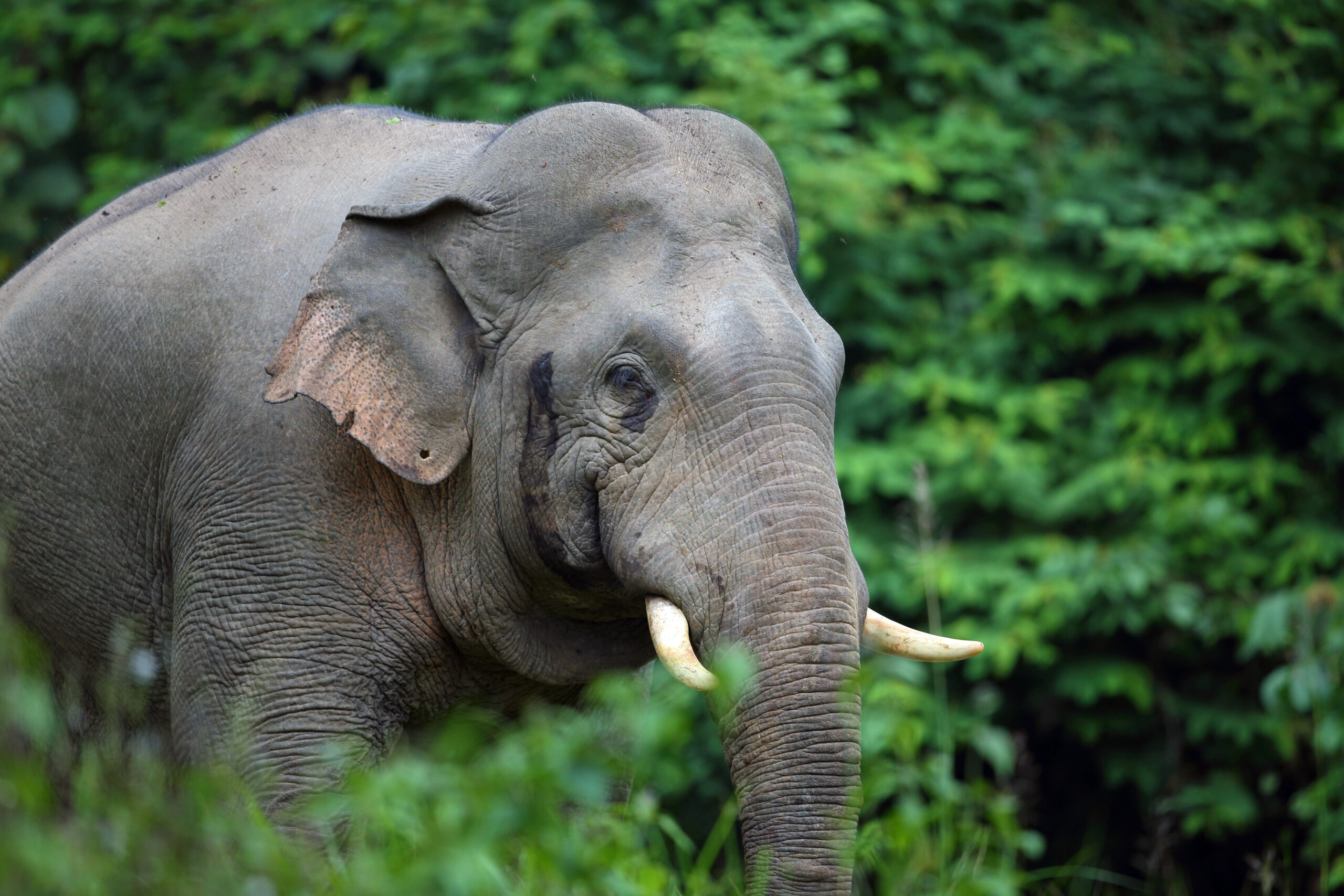There is an endless fascination with elephants in Thai culture. Perhaps this interest is because elephants may be one of the last megaherbivore species on Earth, or maybe it has to do with the representation of elephants in various religions. The stories of these creatures, and their relationships to humans, have been documented through sacred texts, walls of temples, and national history.
Today, however, elephants are considered endangered because of habitat loss and poaching. While Thai culture respects elephants, the animals are subject to abuse by modern-day society.
Historically, the Asian elephant could be found across mainland Asia, including areas of India, Myanmar, Thailand and Laos. Now, they exist across 13 Asian countries. Before the borders of Thailand and Laos were formed, the region surrounding the Mekong Basin was called Lan Xang, meaning ‘Land of A Million Elephants’ in Laotian and Thai. The Lan Xang Kingdom existed for more than 350 years, from 1353 and 1707, and was considered one the largest kingdoms in Southeast Asia. Included in the name of the kingdom, the elephant signified prowess and abundance.
In the past, elephants were used for transportation and war. White elephants were of special importance. They were rare. White elephants, in reality, are reddish-brown with pale eyelashes and toenails. It is a shared belief across Southeast Asian countries that these creatures are sacred, based on Brahmin text. Owning a male white elephant would bring good fortune. Kings that possessed white elephants would also be considered especially commendable and powerful.
The major presence of elephants in the culture and history of both Thailand and Laos has led to their status as the national animal. Thailand officially announced that the elephant would be the national animal back in 1963. Although monumental, the status showed a trend in the decline of elephants.

Thailand’s first national flag was of a white elephant on a red background. Created by King Mongkut in 1855, the flag was used until 1917. Similarly, Laos’ first flag featured a triple-headed white elephant from the early 1900s. For both countries, the elephant symbolised royalty. As governments changed, Laos gained its independence from Franceand Thailand, turning the country’s government into a constitutional monarchy. The flag was adapted to incorporate the representation of civilians into it.
As industrial development grew continuously, the role of elephants in society decreased. Machines replaced the need for elephants in warfare and transportation. The forest habitat of elephants declined and became increasingly fragmented. In turn, elephants shifted to be creatures for worship or tourism.
“One thing that has drawn people to be interested in coming to Thailand is how beautiful the Thai elephants are,” said Sangduen ‘Lek’ Chailert, founder of the Elephant Nature Park. “I myself really love them.”
Asian elephants are listed as an ‘endangered’ species on the International Union for Conservation of Nature’s Red List of threatened species. Over the last three generations (around 75 years), the population of Asian elephants has declined by at least 50%, according to IUCN predictions based on available habitat areas.
Recently, the Covid-19 pandemic has contributed to the decline of Asian elephants in Thailand, Lek notes.
“Compared to many years ago and especially during Covid, the number of Thai elephants is in decline,” Lek said. Over the course of the pandemic, she estimates the population of elephants in Thailand declined from more than 3,700 elephants to approximately 3,500.
Many are now domesticated and their livelihoods depend on the mahout. With Thai tourism in decline, however, mahouts are left without an income, which makes it difficult to tend to the elephants.
The relationship between humans and elephants is complex, Lek said. While many Thai people consider elephants sacred, they will simultaneously applaud elephants for doing tricks – even if it means abuse behind the scenes.
“It’s a little bit confusing between people and elephants. People have elephants to help them work for the money,” Lek said. “And if you go to temples, you’ll see that there are elephant statues everywhere. But then realistically, the elephants will stay and work and get treated like animals.”
This article is part of Southeast Asia Globe’s World Wildlife Day Special series.


